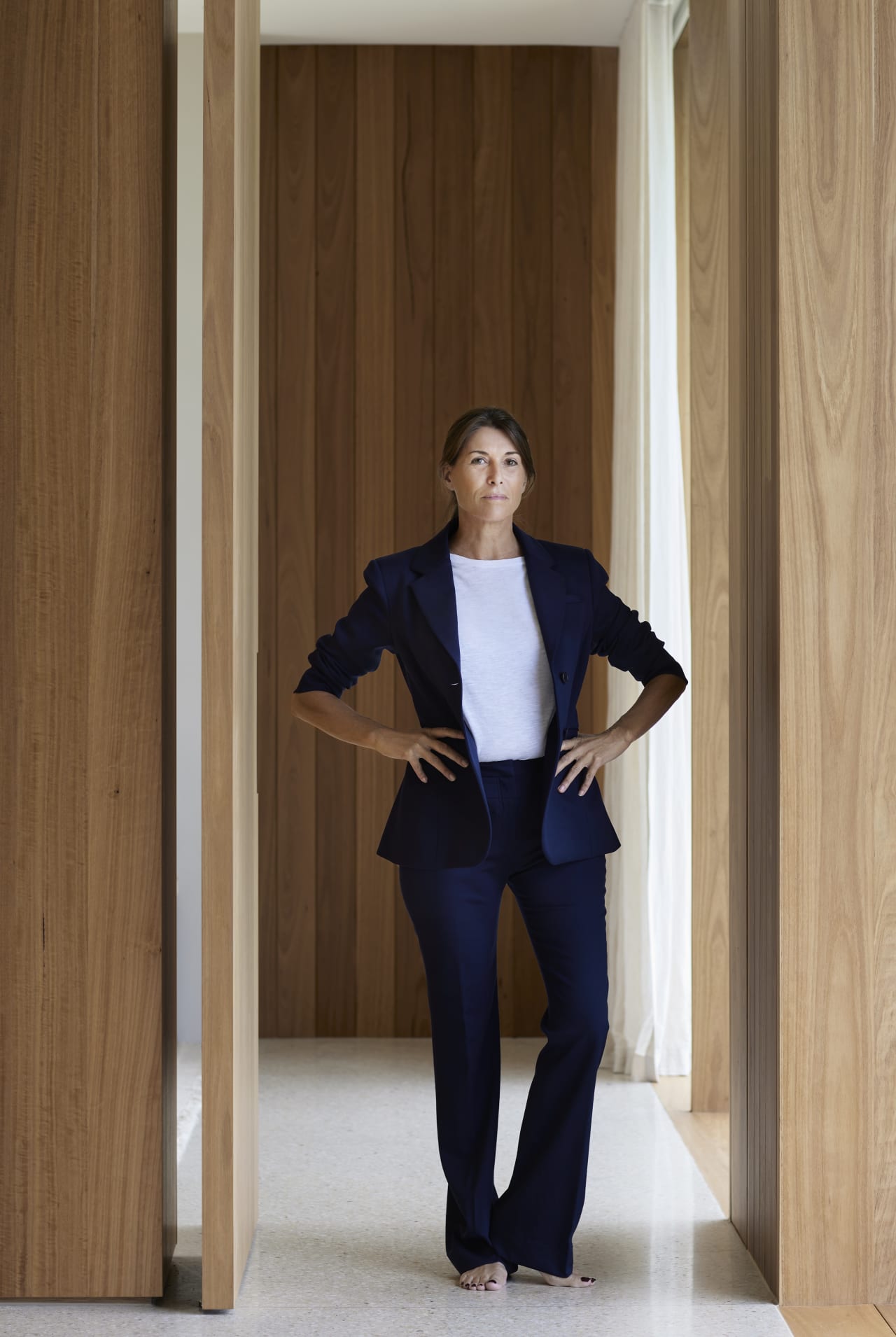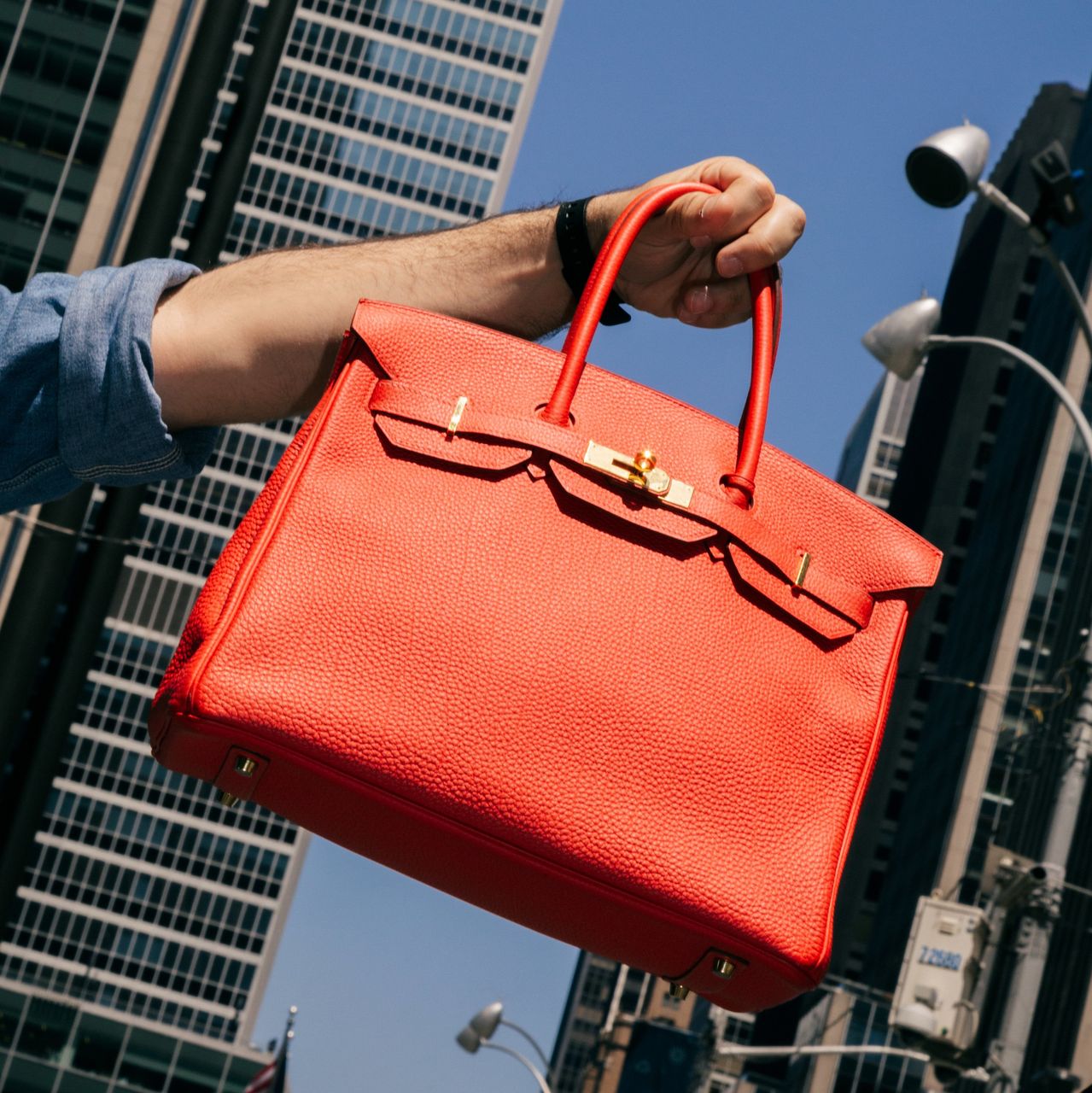‘Lighting Is as Important as the Architecture,’ Says Designer Nicci Kavals
One of the leading luminaries in the world of lighting design, Nicci Kavals actually started her career as a chef, relocating to cook at a restaurant on the Greek island of Naxos, before she moved to Paris to work as a food stylist for the magazine Votre Beauté.
“My experiences as a food stylist taught me the process of reduction and simplification,” she says. “What remains—whether on the plate or more broadly in design—needs to have purpose and relevance, even if its significance is hard to articulate.”
Kavals eventually returned to her native Australia, working as Melbourne editor at Vogue Entertaining + Travel magazine, and then as a homewares and hard goods product designer for the lifestyle brand Country Road, before she ultimately established Articolo Architectural Lighting in Melbourne just over a decade ago.
“I felt there was a gap in the market for superbly designed artisanal lighting that was unique, sculptural, detailed yet timeless,” she says.
Now, with showrooms in Melbourne and New York City, Articolo has designed artisanal lighting for Nobu Restaurants, the Museum of Applied Arts in Budapest, the Tiffany & Co. flagship store on Fifth Avenue, and residential clients including Robert Downey Jr.
The company relies on artisanal workmanship, Kavals says. “Each of our pieces embodies their expertise.”
Articolo has steadily expanded its global presence, having made its European debut at Salone del Mobile Milan in 2019. The company reached a pair of milestones last year, as Kavals unveiled a new identity and rebranded the company as Articolo Studios—reflecting its evolution into a luxury lifestyle brand—while opening its North American flagship showroom in an elegant, gallery-like space with soaring ceilings across from New York’s Madison Square Park.

Eric Petschec
As her designs evolve, Kavals acknowledges the need to stay ahead of ever-advancing technologies. Last year, Articolo launched its first tuneable white light source known to restore the body’s circadian rhythm in a decorative fitting.
In April during Milan Design Week, the company introduced Articolo Home, a capsule collection of small-scale furniture pieces. And last month, the company launched rechargeable lighting.
Kavals, 68, recently spoke with Penta from her home in Melbourne where she lives with husband, Vic Kavals, also co-founder and director of Articolo Studios.
Penta : Among design elements, how important is lighting?
Nicci Kavals: It can change our perspective on how we view and appreciate the space around us—lighting is as important as the architecture, the interior design and finishes and the furniture selection. Lighting provides the soul to a space. It often provides a moment of awe, where you are moved by something beautiful.
How much of a difference does bespoke decorative lighting make?
When each fixture is purposely selected to enhance the space with shadow play of light, there is a sense of atmosphere and soul—the animation of light dances within the space, patterns and striations casting movement, layering, and providing depth. I love the notion of moving through a space and happening upon a beautiful fixture or light, which is more like artwork and makes you stop, pause, and exhale, where you take in that moment of beauty and then move on.
How do you describe your process?
I have a huge library or body of designs that I am continuously working through and refining. I tend to mull over them endlessly to perfect them before being ready to take them to market. We like to explore and experiment with new materials. … It’s important that each design reflects the many hands that have produced it, celebrating the craftsmen and -women whose skill and talent I deeply respect. It’s the human element that in many ways we’re losing through mass production—I strongly believe there’s no substitute for the handmade.
Where do you look for inspiration?
To express myself creatively through the play of light and shade is a genuine gift. I find inspiration everywhere I go; from the washed, bleached colors of Marrakech and Mexico to the architectural detail found in minimalist Japan. I love to explore the local crafts, and pore over the work of local artisans of different lands. The Japanese are exceptionally talented in porcelain, whilst the Mexicans are experts in beading, embroidery, and silver.
How would you describe your progression from an Australian firm to a global one?
At the time of starting Articolo in 2012, designing and manufacturing lighting in Australia was quite uncommon, with most of the high-end decorative lighting coming out of Europe and the U.S. In the beginning, my knowledge of lighting was minimal—which in hindsight, was perhaps a blessing as I may never have embarked on this journey had I been aware of the challenges. As I don’t come from a lighting background, I’ve found that I’m not restricted by a traditional approach. As we expanded globally, we had the option to expand into Europe or the U.S. I have always been drawn to a European design sensibility that celebrates craftsmanship, timelessness, and the artisanal. However, knowing that the U.S. was the harder option, we went in that direction as we never make the easy decision and have challenged ourselves at every turn to be better and improve constantly. This was a completely new ball game for us—certification standards to comply are vastly different in the U.S. than the rest of the world.
What does the future hold for your field?
Embracing cutting-edge technologies can elevate the functionality and aesthetics of luxury lighting. Integration with smart-home systems, customisable lighting experiences, and the use of innovative materials and finishes can provide clients with a truly unique and immersive experience. I expect to see a surge in demand for intelligent lighting solutions, and I am optimistic about the potential for transformative advancements in this area. While technology is crucial, I also value the artistry and craftsmanship that goes into creating luxury lighting pieces. I hope to see a continued appreciation for handmade, artisanal designs that showcase the skills of talented craftsmen. Balancing traditional craftsmanship with modern design sensibilities can result in timeless pieces that stand out in the market.
This interview has been edited for length and clarity.
 Copyright 2020, Dow Jones & Company, Inc. All Rights Reserved Worldwide. LEARN MORE
Copyright 2020, Dow Jones & Company, Inc. All Rights Reserved Worldwide. LEARN MORE
This stylish family home combines a classic palette and finishes with a flexible floorplan
Just 55 minutes from Sydney, make this your creative getaway located in the majestic Hawkesbury region.
As Paris makes its final preparations for the Olympic games, its residents are busy with their own—packing their suitcases, confirming their reservations, and getting out of town.
Worried about the hordes of crowds and overall chaos the Olympics could bring, Parisians are fleeing the city in droves and inundating resort cities around the country. Hotels and holiday rentals in some of France’s most popular vacation destinations—from the French Riviera in the south to the beaches of Normandy in the north—say they are expecting massive crowds this year in advance of the Olympics. The games will run from July 26-Aug. 1.
“It’s already a major holiday season for us, and beyond that, we have the Olympics,” says Stéphane Personeni, general manager of the Lily of the Valley hotel in Saint Tropez. “People began booking early this year.”
Personeni’s hotel typically has no issues filling its rooms each summer—by May of each year, the luxury hotel typically finds itself completely booked out for the months of July and August. But this year, the 53-room hotel began filling up for summer reservations in February.
“We told our regular guests that everything—hotels, apartments, villas—are going to be hard to find this summer,” Personeni says. His neighbours around Saint Tropez say they’re similarly booked up.
As of March, the online marketplace Gens de Confiance (“Trusted People”), saw a 50% increase in reservations from Parisians seeking vacation rentals outside the capital during the Olympics.
Already, August is a popular vacation time for the French. With a minimum of five weeks of vacation mandated by law, many decide to take the entire month off, renting out villas in beachside destinations for longer periods.
But beyond the typical August travel, the Olympics are having a real impact, says Bertille Marchal, a spokesperson for Gens de Confiance.
“We’ve seen nearly three times more reservations for the dates of the Olympics than the following two weeks,” Marchal says. “The increase is definitely linked to the Olympic Games.”

Getty Images
According to the site, the most sought-out vacation destinations are Morbihan and Loire-Atlantique, a seaside region in the northwest; le Var, a coastal area within the southeast of France along the Côte d’Azur; and the island of Corsica in the Mediterranean.
Meanwhile, the Olympics haven’t necessarily been a boon to foreign tourism in the country. Many tourists who might have otherwise come to France are avoiding it this year in favour of other European capitals. In Paris, demand for stays at high-end hotels has collapsed, with bookings down 50% in July compared to last year, according to UMIH Prestige, which represents hotels charging at least €800 ($865) a night for rooms.
Earlier this year, high-end restaurants and concierges said the Olympics might even be an opportunity to score a hard-get-seat at the city’s fine dining.
In the Occitanie region in southwest France, the overall number of reservations this summer hasn’t changed much from last year, says Vincent Gare, president of the regional tourism committee there.
“But looking further at the numbers, we do see an increase in the clientele coming from the Paris region,” Gare told Le Figaro, noting that the increase in reservations has fallen directly on the dates of the Olympic games.
Michel Barré, a retiree living in Paris’s Le Marais neighbourhood, is one of those opting for the beach rather than the opening ceremony. In January, he booked a stay in Normandy for two weeks.
“Even though it’s a major European capital, Paris is still a small city—it’s a massive effort to host all of these events,” Barré says. “The Olympics are going to be a mess.”
More than anything, he just wants some calm after an event-filled summer in Paris, which just before the Olympics experienced the drama of a snap election called by Macron.
“It’s been a hectic summer here,” he says.

AFP via Getty Images
Parisians—Barré included—feel that the city, by over-catering to its tourists, is driving out many residents.
Parts of the Seine—usually one of the most popular summertime hangout spots —have been closed off for weeks as the city installs bleachers and Olympics signage. In certain neighbourhoods, residents will need to scan a QR code with police to access their own apartments. And from the Olympics to Sept. 8, Paris is nearly doubling the price of transit tickets from €2.15 to €4 per ride.
The city’s clear willingness to capitalise on its tourists has motivated some residents to do the same. In March, the number of active Airbnb listings in Paris reached an all-time high as hosts rushed to list their apartments. Listings grew 40% from the same time last year, according to the company.
With their regular clients taking off, Parisian restaurants and merchants are complaining that business is down.
“Are there any Parisians left in Paris?” Alaine Fontaine, president of the restaurant industry association, told the radio station Franceinfo on Sunday. “For the last three weeks, there haven’t been any here.”
Still, for all the talk of those leaving, there are plenty who have decided to stick around.
Jay Swanson, an American expat and YouTuber, can’t imagine leaving during the Olympics—he secured his tickets to see ping pong and volleyball last year. He’s also less concerned about the crowds and road closures than others, having just put together a series of videos explaining how to navigate Paris during the games.
“It’s been 100 years since the Games came to Paris; when else will we get a chance to host the world like this?” Swanson says. “So many Parisians are leaving and tourism is down, so not only will it be quiet but the only people left will be here for a party.”
This stylish family home combines a classic palette and finishes with a flexible floorplan
Just 55 minutes from Sydney, make this your creative getaway located in the majestic Hawkesbury region.





















